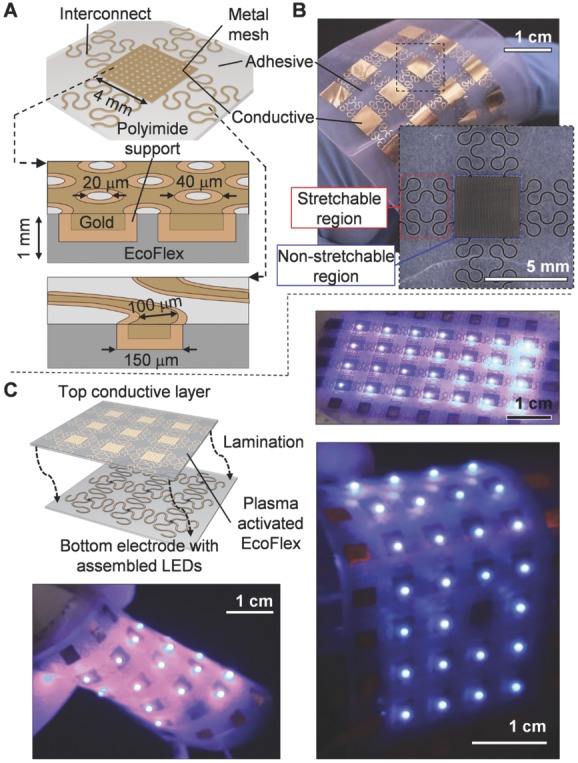Figure 5.

Schematics and photographs describing the design, fabrication, and application of the stretchable top conductive lamination layer next to results of a completed 2 mm thin rubber-like module under test. A) The designed laminate is a composite made up of: i) conductive and ii) adhesive as well as iii) stretchable (meander), and iv) non-stretchable (metal mesh) regions; oxygen plasma activated EcoFlex acts as an adhesive during the lamination process. The 20 μm in diameter intermediate EcoFlex bonding sites hold the metal mesh in place which in turn contacts the top contact of the LEDs. A weak point of the current design is the abrupt transition from the “non-stretchable” mesh to the “stretchable” meander. Here, the polyimide support (a partial cladding visible in (A)) improves the mechanical stability. B) Photographs of the realized stretchable top conductive laminate. C) The lamination is presently done by hand; as a consequence, we used a 4 mm × 4 mm metal mesh to tolerate a 2 mm misalignment with respect to the center contact of the LED. Outside this limit, the top contact will not be contacted. The bottom photograph shows a completed lighting module under various levels of deformation.
